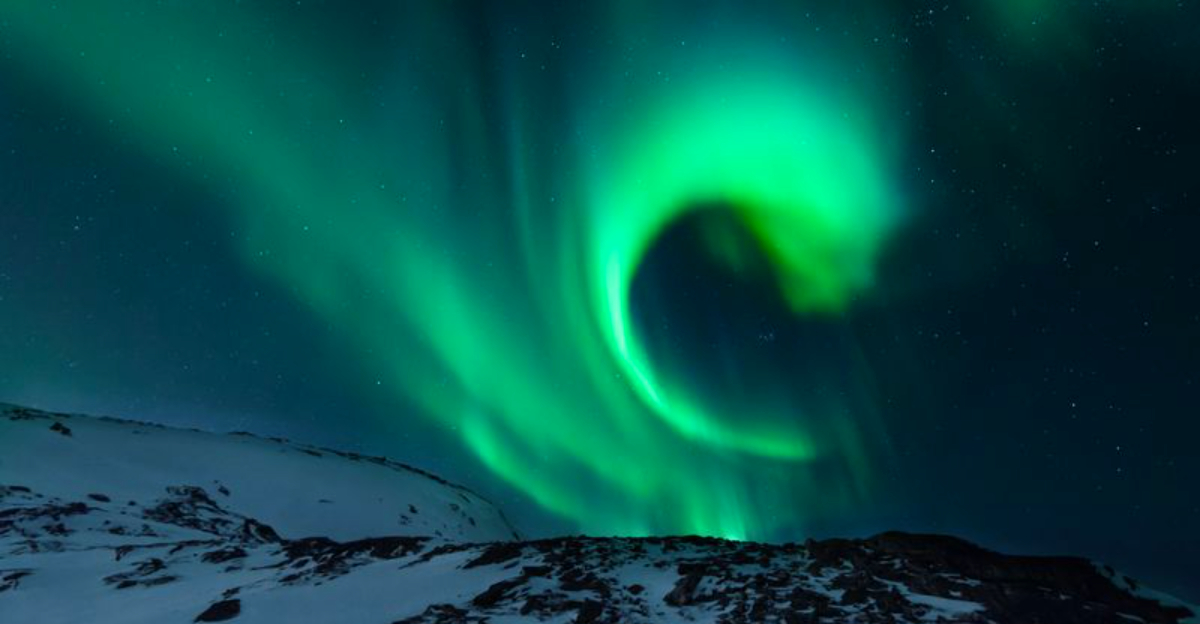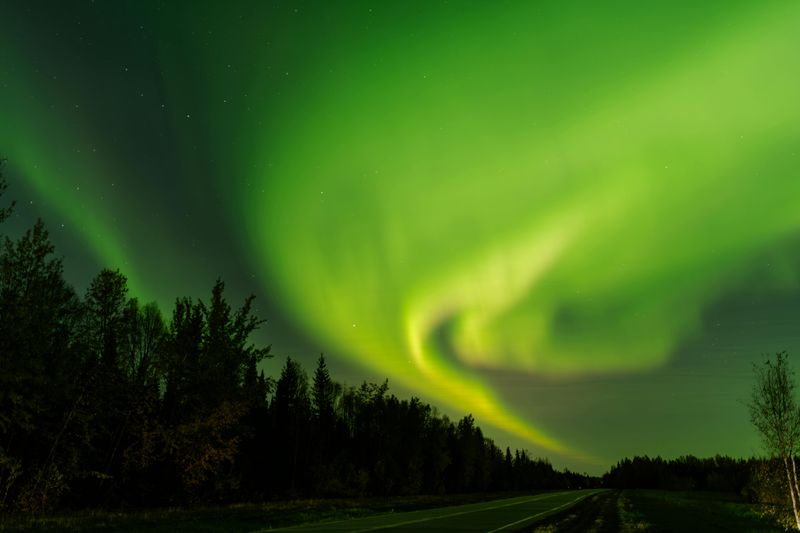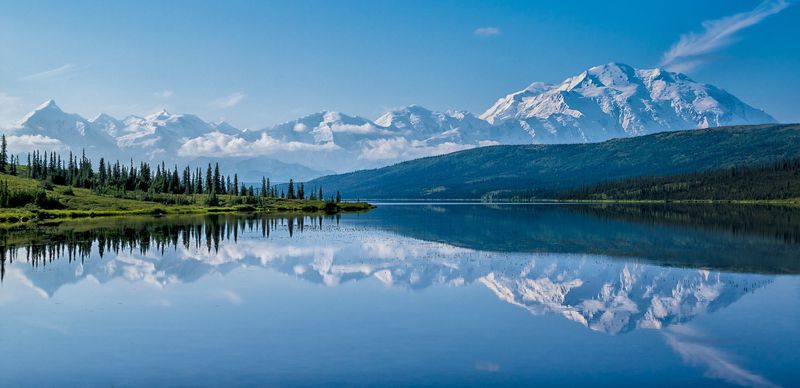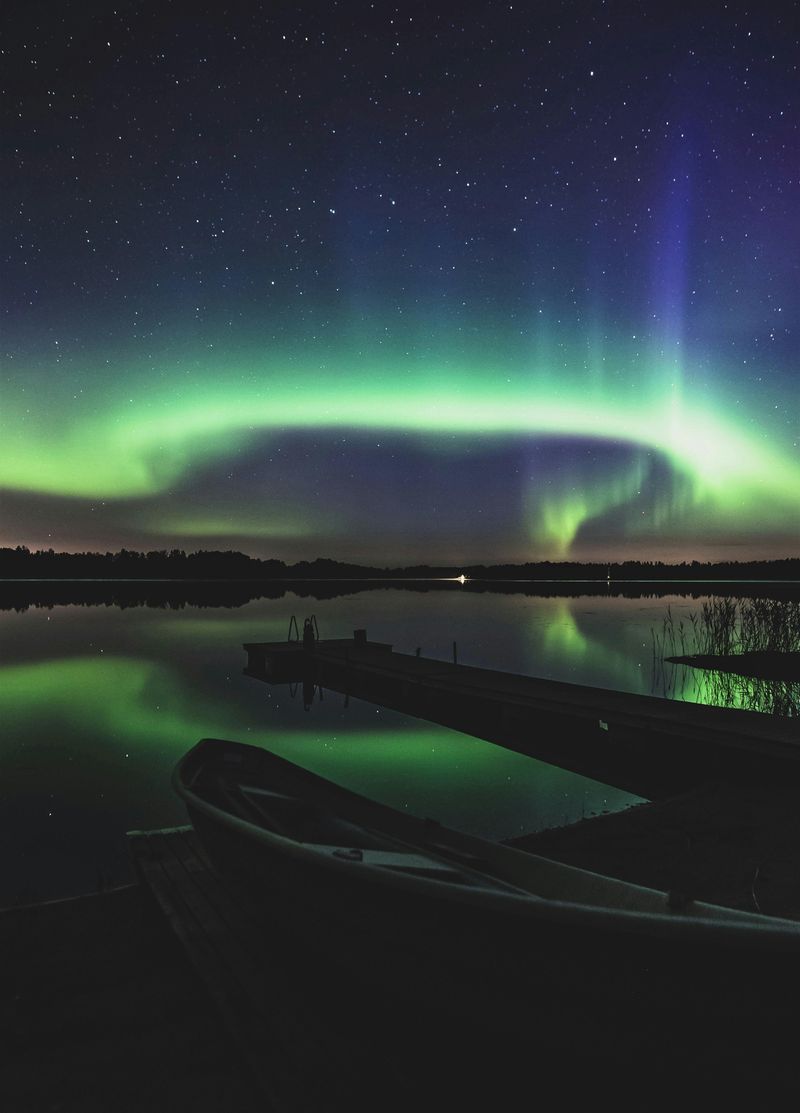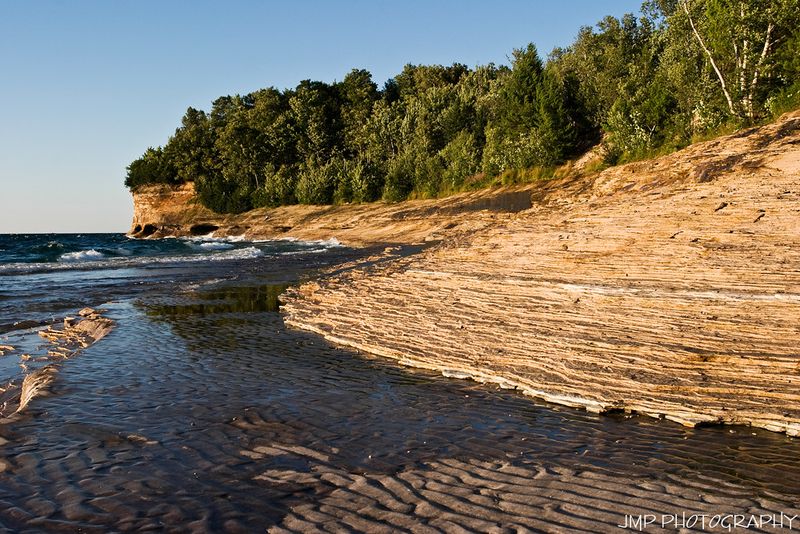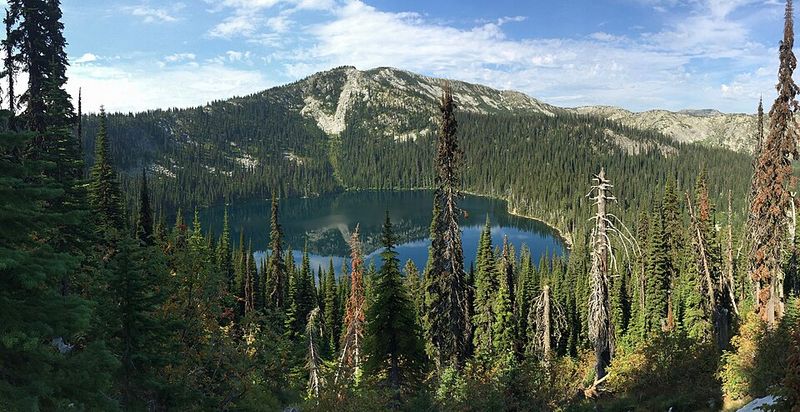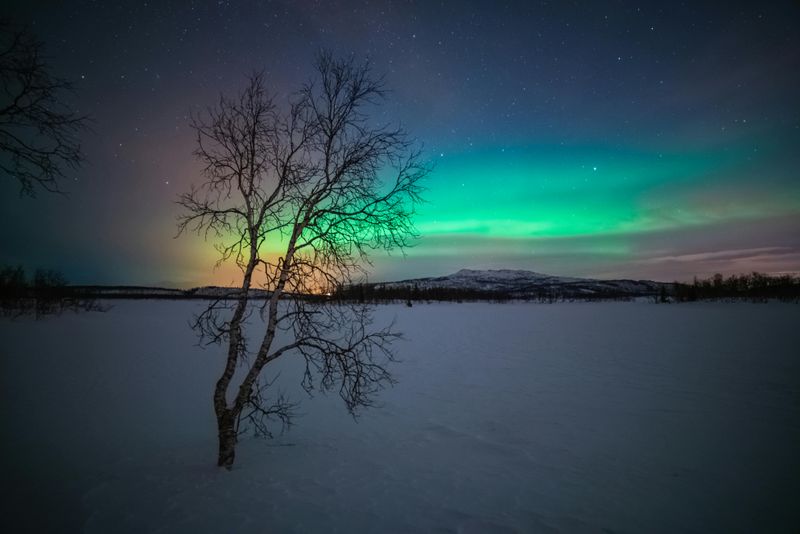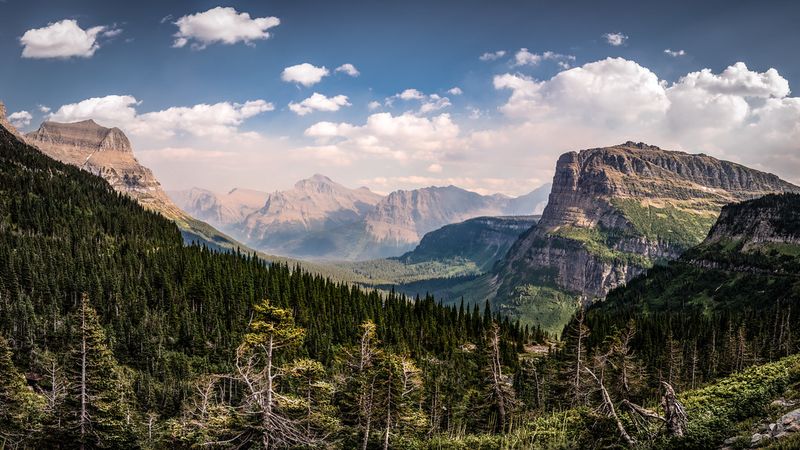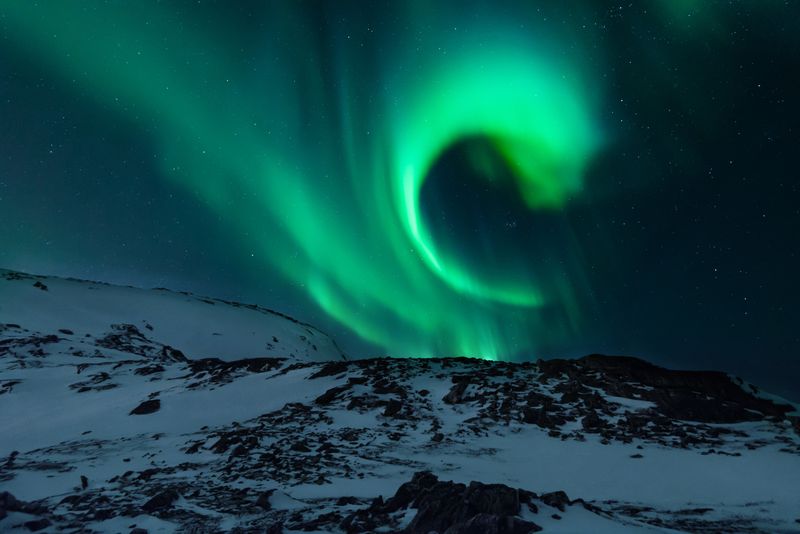You don’t need a passport to witness one of nature’s most stunning displays. The Northern Lights, or Aurora Borealis, paint the sky with ribbons of green, purple, and pink right here in the United States. From Alaska’s frozen wilderness to the forests of Minnesota and Michigan, several amazing spots offer front-row seats to this celestial wonder.
Fairbanks, Alaska
Perched directly under the auroral oval, Fairbanks holds the crown as America’s aurora capital. Visitors here witness the lights on roughly 200 nights each year when conditions cooperate.
Long winter nights and minimal light pollution outside the city center make this spot nearly unbeatable. Many lodges provide wake-up calls when the show begins, and tour operators whisk guests to darker areas where colors pop even brighter.
September through April offers your best window, avoiding summer’s endless daylight. Give yourself at least two or three nights to boost your odds, and track the KP-index for geomagnetic storms that promise especially vivid displays.
Denali National Park, Alaska
A few hours from Fairbanks, Denali combines wilderness drama with celestial magic. Snow-covered peaks and wide-open tundra create a stunning stage for the auroras, and the lack of nearby towns means zero light pollution spoiling your view.
Winter brings crisp, cold air that sharpens the colors overhead. The lights reflecting off snowy terrain double the spectacle, turning the entire landscape into a glowing wonderland.
Backcountry lodges and guided aurora tours help you maximize your time here. Pack serious cold-weather gear, plan for winter-season stays, and prepare for an experience that blends mountain majesty with sky-high theatrics.
Voyageurs National Park, Minnesota
Craving dramatic auroras without an Alaskan price tag? Voyageurs National Park in northern Minnesota delivers big-time. Designated as an International Dark Sky Park, it ranks among the darkest places in the lower forty-eight states.
Remote lakes stretch out beneath expansive skies, giving the aurora plenty of canvas to dance across. Late fall through early spring brings long, crisp nights when the lights often appear overhead, reflecting off frozen or calm water surfaces.
Lodges near the park or seasonal camping spots put you right in the action. The boreal forest setting adds a magical touch, making every sighting feel like a private wilderness show.
Michigan’s Upper Peninsula
Michigan’s Upper Peninsula is quickly becoming a dark-sky darling for aurora hunters. High latitude, vast Lake Superior shorelines, and minimal light pollution combine to create one of the best viewing zones in the continental United States.
The Keweenaw Peninsula stands out with unobstructed northern views and certified dark-sky areas perfect for stargazing and aurora watching. Even moderate geomagnetic activity can produce visible displays here thanks to those pitch-black skies.
Autumn through early spring offers your prime window. Pick a moonless night, bundle up in layers, and head to a shoreline or hilltop for the clearest views and the most memorable experience.
Idaho Panhandle National Forests, Idaho
Idaho might surprise you. Near the Canadian border, the Idaho Panhandle region—especially around Priest Lake and Sandpoint—can deliver stunning auroras during strong geomagnetic storms.
Elevation, crystal-clear dark skies, and remoteness all work in your favor here. While sightings are less frequent than in Alaska or Minnesota, when solar activity spikes, the payoff can be spectacular.
This is a chase location, meaning you’ll need to watch aurora forecasts closely and be ready to head out on short notice. But for adventurous souls willing to gamble on the conditions, Idaho’s wilderness backdrop makes every sighting feel like a hidden treasure discovered.
Aroostook County, Northern Maine
On the East Coast, Aroostook County in northern Maine gives aurora seekers their best shot at catching the lights. Its high latitude, low light pollution, and wide-open skies create conditions that occasionally favor displays.
Strong geomagnetic activity is key here, since you’re farther from the auroral oval than western or northern locations. When storms ramp up, though, the auroras can glow beautifully across Maine’s rural landscapes.
Choose lodging away from town lights, scan the northern horizon on clear, cold nights, and keep your expectations flexible. With patience and a bit of luck, you might witness a rare East Coast aurora show.
Montana – Glacier & Northern Montana Regions
Montana’s northern reaches, including Glacier National Park, offer rugged terrain and high-altitude vantage points perfect for aurora photography. During active solar periods, the lights can appear above tree lines and mountain ridges, creating jaw-dropping scenes.
Clear skies and minimal light pollution amplify your chances. Head out after dark, find a high overlook, and settle in for a potential show that pairs wild west landscapes with celestial fireworks.
Plan for multi-night stays to improve your odds, and bring a camera with long-exposure capability to capture the colors dancing over Montana’s iconic peaks. The combination of wilderness and aurora makes every moment unforgettable.
North Dakota / Northern Plains States
North Dakota and the northern plains might seem like long shots, but they can surprise you when solar activity spikes. Open plains with minimal light pollution offer horizon-to-horizon views of the northern sky, perfect for catching faint auroras.
Remote state parks or quiet backroads on moonless nights provide ideal vantage points. You’re farther from the auroral oval, so high KP-index values are essential for any chance of success.
If you’re already in the region and willing to stay up late, it’s worth a shot. The flat terrain means nothing blocks your view, and when the lights do appear, the vast prairie setting makes the experience uniquely memorable.
